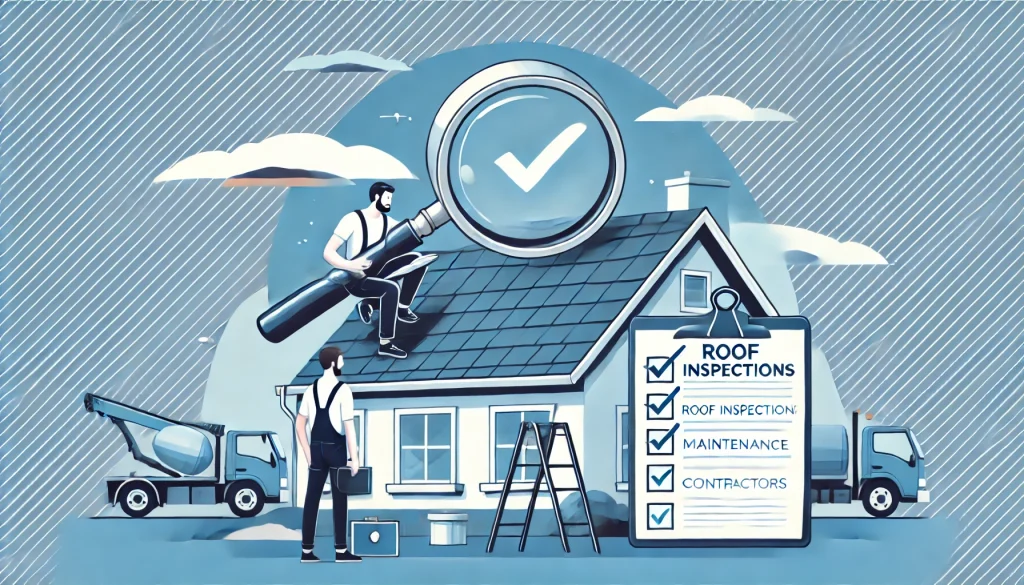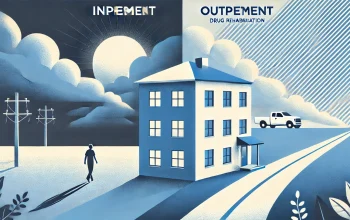US Roof Maintenance 101: Why Hiring Qualified Contractors is Key

US Roof Maintenance: A roof is one of the most vital components of a home, sheltering you from the elements and keeping your living environment secure and comfortable. But how often do homeowners give their roofs the attention they deserve? Unfortunately, many only notice a problem when there’s already damage—leading to costly repairs or, worse, a full roof replacement. This is where regular roof inspections and maintenance by qualified contractors play a pivotal role.
In this article, we’ll explore the importance of routine roof inspections, the role professional contractors play in maintaining your roof, and how investing in preventive maintenance can save you money in the long run. Let’s dive deep into why every homeowner should prioritize roof inspections and hire experts for maintenance.
Table of Contents
Why Are Roof Inspections Necessary?
US Roof Maintenance inspections are essential for identifying potential problems before they escalate into bigger issues. While a roof may seem sturdy on the outside, hidden damage can weaken its structure over time. Here are a few key reasons why regular roof inspections are crucial:
- Early Problem Detection
US Roof Maintenance damage isn’t always obvious at first glance. Problems like small leaks, cracked shingles, and damaged flashing can be subtle. However, these issues can quickly grow, causing extensive water damage to your home’s interior. A regular inspection can catch these problems early, allowing for prompt repairs. - Prolongs Roof Lifespan
By scheduling routine inspections, you can significantly extend the life of your roof. Qualified contractors can perform minor repairs and suggest maintenance that prevents small issues from turning into costly damage, helping you avoid premature roof replacements. - Maintains Energy Efficiency
Damaged roofs can lead to poor insulation and air leaks, resulting in higher energy bills. A compromised roof might let warm or cool air escape from your home, making your HVAC system work harder. Inspections help ensure your roof maintains its insulation integrity, keeping your home energy-efficient. - Insurance Compliance
Many insurance companies require homeowners to regularly inspect their roofs as part of the policy agreement. Failure to maintain your roof could void coverage for damage caused by wear and tear. By having your roof professionally inspected, you’re also protecting yourself financially in the event of a claim.
What Does a Roof Inspection Entail?
A professional US Roof Maintenance inspection by a qualified contractor involves more than just a quick look. Trained contractors know where to look for specific issues and have the expertise to identify potential problems. Here’s a breakdown of what typically happens during an inspection:
- Exterior Inspection
The contractor will examine the roof’s surface for any visible damage. This includes checking the condition of shingles, looking for cracks, blisters, or areas of wear, and identifying missing or loose shingles. They will also assess the roof’s slope and drainage system, ensuring that water is properly directed away from the house. - Flashing and Sealants
Flashing refers to the metal pieces installed around chimneys, vents, and skylights to prevent water from seeping into the home. During an inspection, contractors check the flashing to ensure it is still in good condition and reseal it if necessary. - Attic Inspection
A thorough roof inspection includes a look inside your attic to assess the underlayer of your roof. Contractors will check for signs of leaks, mold growth, and insulation problems. This step helps identify hidden damage that may not be visible from the exterior. - Gutter and Downspout Inspection
Proper drainage is essential for roof health. Contractors will inspect gutters and downspouts to ensure they’re not clogged and that water is flowing away from your home. Poor drainage can cause water to pool on the roof, leading to leaks and damage. - Roof Ventilation
Good US Roof Maintenance ventilation helps regulate attic temperatures and prevent moisture buildup. During the inspection, contractors will check vents for blockages and ensure that air is flowing correctly.
Signs You Need a Roof Inspection
Even if you schedule regular inspections, certain signs indicate you need one sooner rather than later. Keep an eye out for the following:
- Visible Leaks
If you notice water stains on your ceiling or walls, it’s a clear sign of a roof leak. Immediate action is required to prevent further damage to your home’s interior. - Sagging Roof
A roof that appears to sag or dip in certain areas suggests structural damage. This is a major red flag and requires immediate inspection by a professional contractor. - Missing or Damaged Shingles
If shingles are cracked, curled, or missing altogether, your roof’s ability to protect your home is compromised. A roof inspection will identify whether repairs or a replacement is needed. - Excessive Granules in Gutters
If you find granules from asphalt shingles accumulating in your gutters, it’s a sign that your roof is aging and losing its protective coating. An inspection will determine the extent of the damage. - After Severe Weather
Strong winds, heavy rain, hail, or snowstorms can cause significant damage to your roof. After severe weather, it’s essential to have a professional inspection to ensure your roof remains in good condition.
The Role of Qualified Contractors in Roof Maintenance
It’s one thing to recognize the importance of roof maintenance, but another to ensure it’s done correctly. Hiring qualified contractors for roof inspections and maintenance is crucial for several reasons:
- Expert Knowledge
Qualified contractors have extensive knowledge of various roofing materials, techniques, and potential problem areas. They know what to look for and can spot issues that an untrained eye might miss. Additionally, they can recommend the best course of action to prevent or address damage. - Use of Professional Tools
US Roof Maintenance professionals come equipped with the right tools to inspect and maintain your roof safely and efficiently. From specialized equipment for detecting leaks to safety gear for working at heights, they ensure the job is done thoroughly. - Compliance with Local Building Codes
Roofing contractors are familiar with local building codes and regulations, ensuring that any repairs or maintenance are done in compliance with legal standards. This is particularly important if you’re planning to sell your home, as potential buyers will want assurance that the roof meets building code requirements. - Warranty Protection
Many roofing manufacturers offer warranties on their products, but these warranties often require regular maintenance by a qualified contractor. By hiring a professional for roof inspections, you’re keeping your warranty valid and protecting your investment. - Safety Considerations
US Roof Maintenance maintenance can be dangerous, especially for homeowners without the necessary experience and equipment. Qualified contractors are trained in safety protocols, minimizing the risk of accidents while working on your roof.
How Often Should You Get Your Roof Inspected?
The frequency of roof inspections depends on several factors, including the age of your roof, local weather conditions, and the type of roofing material. However, a general rule of thumb is to schedule a professional inspection twice a year—once in the spring and once in the fall. This timing allows contractors to catch any damage caused by winter weather and prepare your roof for the upcoming season.
In addition to these regular inspections, it’s also wise to have your roof inspected after any significant weather events, such as a major storm or hurricane. Extreme weather can cause hidden damage that may not be immediately apparent but can worsen over time if not addressed.
Roof Maintenance Tips to Extend Roof Lifespan
While professional inspections are essential, there are also steps homeowners can take to maintain their roofs between inspections. Here are a few maintenance tips to help extend your roof’s lifespan:
- Keep Gutters Clean
Clogged gutters can cause water to back up onto your roof, leading to leaks and water damage. Make it a habit to clean your gutters regularly, especially after a heavy storm or during the fall when leaves accumulate. - Trim Overhanging Branches
Tree branches that hang over your roof can scratch the surface, dislodge shingles, and cause debris to accumulate. Keep trees trimmed to prevent potential damage. - Remove Debris
Leaves, branches, and other debris can accumulate on your roof, trapping moisture and causing rot. Safely remove any debris from your roof as part of your routine maintenance. - Check Attic Insulation and Ventilation
Proper insulation and ventilation in your attic are essential for maintaining roof health. Poor ventilation can lead to moisture buildup, causing mold and mildew to form. Ensure your attic is well-ventilated to protect your roof. - Inspect Your Roof After Severe Weather
After a storm, take a moment to visually inspect your roof for any obvious signs of damage. While this doesn’t replace a professional inspection, it allows you to spot immediate concerns that need attention.
Choosing the Right Roofing Contractor
When it comes to US Roof Maintenance inspections and maintenance, not all contractors are created equal. It’s important to choose a qualified and reputable US Roof Maintenance contractor to ensure the job is done right. Here are a few tips to help you find the right professional:
- Check Credentials and Licensing
Ensure that the contractor you hire is licensed, bonded, and insured. This protects you in the event of accidents or damage during the inspection or maintenance process. - Look for Experience
A contractor with years of experience is more likely to have the knowledge and skills needed to handle your roof’s unique requirements. Ask about their experience with your specific type of roof and whether they’ve worked on similar projects. - Read Reviews and Ask for References
Online reviews and testimonials can give you a sense of a contractor’s reputation. Don’t hesitate to ask for references from previous clients to ensure they have a track record of delivering quality work. - Get a Detailed Estimate
Before hiring a contractor, request a detailed estimate that outlines the scope of the work and the associated costs. This will help you avoid any surprises and ensure that you’re getting a fair price. - Verify Warranty Coverage
Ask the contractor about the warranty on their work and any materials used. A reliable contractor should offer warranties on both labor and materials, giving you peace of mind that your investment is protected.
Conclusion
US Roof Maintenance is one of the most important parts of your home, and maintaining it is essential for the safety, comfort, and longevity of your living space. By scheduling regular roof inspections and working with qualified contractors for maintenance, you can prevent costly repairs, extend the life of your roof, and protect your home’s value. Don’t wait until there’s a major problem—be proactive about roof care and ensure you’re working with experienced professionals who can keep your roof in top condition for years to come.
For expert roof inspections and maintenance, contact Our team of qualified contractors is ready to help you maintain a safe, efficient, and durable roof. Visit our website at www.voovle.club to schedule an inspection or learn more about our services.


